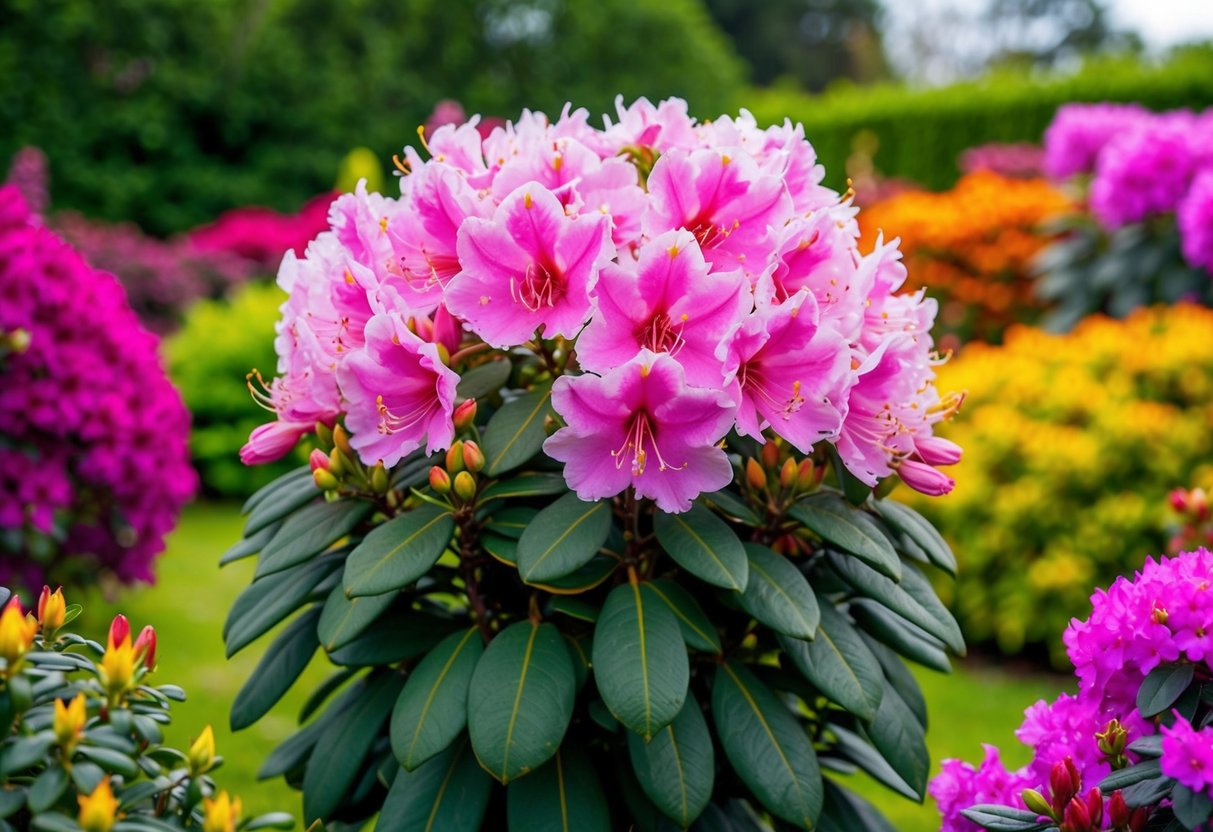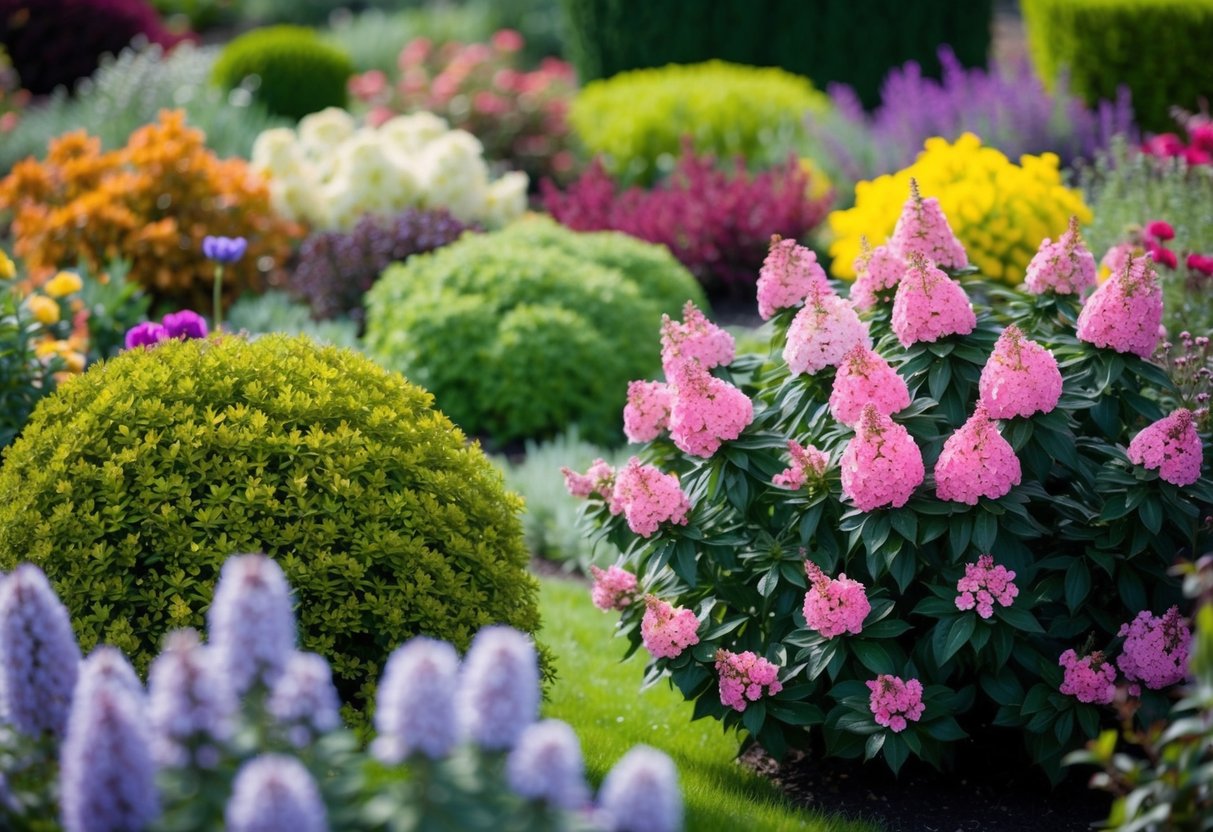What is the Longest-Lasting Flowering Shrub? Discover Top Picks
If you’re looking to brighten up your garden with vibrant, long-lasting blooms, you’ve come to the right place. Flowering shrubs can offer months of color and beauty, making your outdoor space a delight through spring, summer, and even into fall. One of the longest-lasting flowering shrubs you can consider is the hydrangea. With its lush clusters of colorful flowers, it provides a stunning display that can last several months.

Flowering shrubs aren’t just about looks; they’re also about the joy and serenity they bring to your environment. Imagine walking through your garden, surrounded by the rich colors of azaleas, rhododendrons, and camellias. These shrubs not only have visually appealing flowers, but many of them, like those found in articles about long-blooming shrubs, are low maintenance, making them a gardener’s best friend.
Picking the right shrub can turn any garden into a year-long floral paradise. Whether you’re a seasoned gardener or just starting out, there’s something magical about watching your garden thrive with the right plant choices. Get ready to explore more about these amazing plants that can transform your garden for seasons to come.
Understanding Flowering Shrubs
Flowering shrubs are an essential element in yard design due to their vibrant blooms and lasting impact. They add visual interest and can contribute to various garden styles. Some shrubs even provide year-round appeal.
Defining Shrubs and Their Role in Gardens
Shrubs are versatile plants that typically grow smaller than trees. They have several stems, which can make them appear bushy. In gardens, shrubs play a crucial role in creating borders, adding height, and providing structure.
Flowering shrubs specifically add vibrant colors with their blooms. You can find them as ornamental shrubs that enhance the visual appeal of your outdoor space. Evergreen shrubs are a popular choice since they keep their leaves all year round, providing continuous greenery.
Using shrubs in your garden can serve different purposes. You might use them to create privacy, reduce noise, or simply as decorative features. They work well in combination with perennials to ensure that your garden has color across all seasons.
Characteristics of Long-Lasting Flowering Shrubs
When choosing the longest-lasting flowering shrubs, look for durability and strong blooming periods. These shrubs often have resilient features that allow them to withstand various weather conditions. Some even offer blooms that can last throughout multiple seasons.
Many long-lasting shrubs have the combined benefit of attracting wildlife. Birds and pollinators are drawn to their bright flowers and berries.
Black chokeberries, with their white flowers and attractive features, are a favorite. Other durable plants include camellias, known for their evergreen leaves and striking blossoms. By selecting shrubs known for their longevity, you can ensure vibrant and enduring beauty in your garden.
Prime Examples of Long-Flowering Shrubs

When choosing long-flowering shrubs for your garden, you can count on azaleas, rhododendrons, hydrangeas, viburnum, and spirea to provide stunning blooms throughout the season. Each of these shrubs has its own unique color and growth habits, making them valuable additions to any landscape.
Azaleas and Rhododendrons: Spring Bloomers
Azaleas and rhododendrons burst into life in spring, offering a vibrant display of color. These shrubs are perfect for brightening up shaded spots as they thrive in part shade conditions. Azaleas are generally smaller with funnel-shaped flowers, while rhododendrons are larger and offer bell-shaped blooms.
These plants enjoy acidic soil and benefit from mulch to maintain moisture and temperature. You can find azaleas and rhododendrons in an array of colors, from pinks and oranges to reds and purples. With proper care, they can bring a cheerful splash of color to your garden each spring.
Hydrangeas: Versatile and Varied
Hydrangeas are versatile shrubs that showcase a variety of bloom shapes and colors. These plants can adapt to different environments and can even change flower color based on soil pH. Blue blooms arise from acidic soil, while alkaline conditions yield pink flowers.
Popular types include mophead hydrangeas with their large, round flower clusters and lacecap varieties that boast flatter blooms. These shrubs enjoy morning sun and afternoon shade, making them ideal for many gardens. With careful selection, hydrangeas can provide spectacular blooms from early summer into fall.
Viburnum and Spirea: Seasonal Showstoppers
Viburnum and spirea are notable for their seasonal beauty. Viburnum offers fragrant white or pink flowers in spring, followed by colorful berries in the fall. They are low-maintenance, adaptable, and can thrive in various conditions. These shrubs make excellent focal points or border plants.
Spirea, on the other hand, provides cascading clusters of small, vibrant flowers. Depending on the variety, spirea can bloom in spring or summer, and they are very hardy. Spireas are perfect for adding texture and interest to your garden with their lush foliage and flower displays, easy to care for with minimal pruning.
Cultivation Tips for Prolonged Blooms

To keep your flowering shrubs blooming as long as possible, you’ll need to consider the right amount of sunlight, soil conditions, and pruning techniques. These cultivation tips help enhance bloom duration and overall plant health.
Sunlight Needs: Full Sun to Partial Shade
Flowering shrubs thrive with just the right amount of sunlight. For many varieties, providing full sun is ideal. This means your plants should receive at least six hours of direct sunlight each day. If full sun isn’t possible, partial shade—meaning a mix of sun and shade throughout the day—can work too.
Tip: Observe how sunlight moves through your garden. This helps you find the best spots for planting shrubs based on their sun needs. In shadier areas, consider shrubs specifically suited to less light for the best results.
Soil Requirements: Achieving Well-Drained Soil
Well-drained soil is crucial for the health of your flowering shrubs. Waterlogged conditions can lead to root rot, while overly dry soil can stunt growth. Start by ensuring your soil has good texture—you may need to add organic matter like compost to improve it.
To test your soil’s drainage, dig a small hole, fill it with water, and see how quickly it drains. If it’s slow, consider adding sand or organic material to improve its properties. Using mulch helps retain moisture while also reducing weed competition, giving your shrubs the best chance to thrive.
Pruning for Health and Flower Power
Regular pruning keeps your shrubs healthy and encourages more blooms. Focus on removing dead, diseased, or overgrown branches. This process not only enhances flower power but also improves air circulation, which reduces disease risk.
Be mindful of when you prune. Many flowering shrubs bloom on last year’s growth, so late winter or early spring pruning is best for these. For others, prune soon after blooming to avoid cutting off future flowers. Using tools like sharp pruners and loppers will make your work easier and help maintain the plants’ health.
Shrubs for Specific Purposes

When choosing flowering shrubs, it’s important to consider their specific purposes in your garden. Some shrubs attract pollinators, while others provide privacy or require minimal upkeep. Tailor your selection to meet your gardening goals and enjoy a vibrant outdoor space.
Attracting Pollinators with Butterfly Bush and Others
To draw bees, butterflies, and other pollinators, choose shrubs that produce nectar-rich blooms. The butterfly bush is a popular option, boasting colorful blooms that last through summer. Its fragrant flowers lure in pollinators, enhancing your garden’s diversity.
Other great choices include lavender and hydrangeas, which also attract plenty of insects stirring activity in your garden. Adding these can turn your space into a lively wildlife garden. Many of these shrubs are suitable for USDA Zones 5 to 9 and grow best in well-drained soil.
Privacy and Fast-Growing Shrubs
For privacy, look for fast-growing shrubs that can form natural barriers. Forsythia grows quickly and reaches heights of up to 10 feet, making it a solid choice. It’s appreciated for its bright yellow flowers that herald spring.
Another consideration is the Leyland cypress, known for its dense foliage. It creates a sound barrier while offering visual privacy. Rose of Sharon is also popular due to its attractive flowers and moderate growth rate. These shrubs not only provide privacy but also bring beauty and security to your garden.
Low-Maintenance Options for Busy Gardeners
If you’re looking for low-maintenance shrubs, choose varieties that require little care. Boxwoods are resilient and often used for their evergreen foliage, providing year-round greenery. They require minimal pruning and adapt to different soil types.
Dwarf varieties like Potentilla are great since they need little water once established. The Perfecto Mundo azalea stands out with its long bloom times and no need for deadheading. These selections are ideal for those who prefer a beautiful garden without extra work, freeing up your time while still keeping your garden lush and vibrant.
Choosing the Right Shrub for Your Garden

When selecting a shrub for your garden, consider your local climate and the size of the plant. These factors play a crucial role in ensuring the health and beauty of your chosen shrub.
Considering Hardiness Zones and Local Climate
Understanding hardiness zones is crucial for picking the right shrub. These zones indicate the climate conditions in your area, such as temperature extremes, which affect plant survival. Knowing your zone helps you choose plants that will thrive in your climate. For instance, Andromeda shrubs are best in Zones 6-9 and offer beautiful fragrant blooms.
Consider rainfall patterns as well. Some shrubs need regular watering, while others are drought-resistant. For example, Kalmia latifolia thrives with adequate rain or irrigation, producing large blooms during summer months. Choosing a shrub compatible with your climate minimizes maintenance needs and ensures longer-lasting blooms.
Sizing Up: Dwarf Varieties to Tall Specimens
Assessing garden space is essential when selecting your shrub’s size. For smaller gardens or borders, dwarf varieties are perfect. These compact shrubs can still provide vibrant flowers and greenery without overtaking limited space.
Larger yards may benefit from tall specimens, like the goldenrain tree, which offers shade and striking blooms. Understanding the growth potential of each shrub type aids in planning garden layout effectively. Be certain of the mature size and account for the plant’s width and height to avoid overcrowding in your garden.







